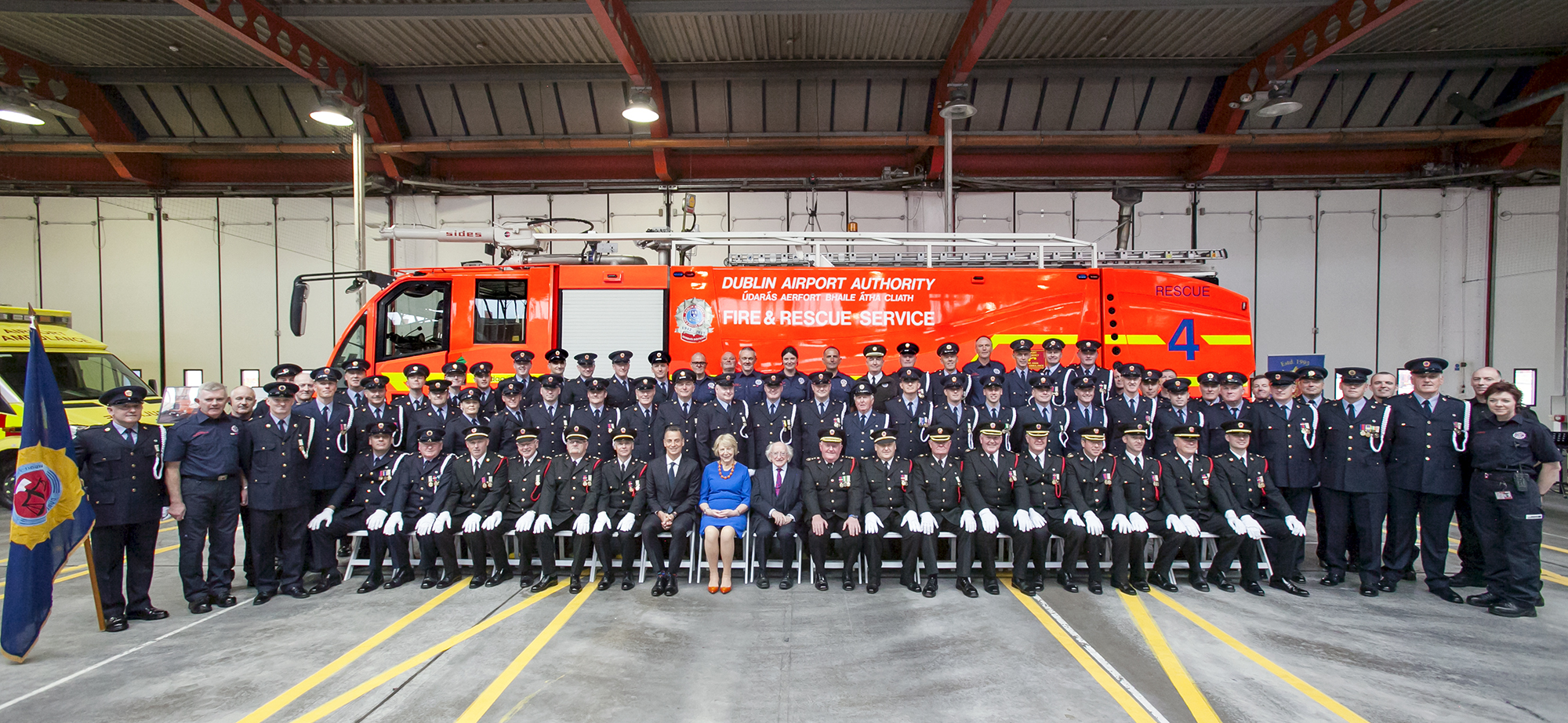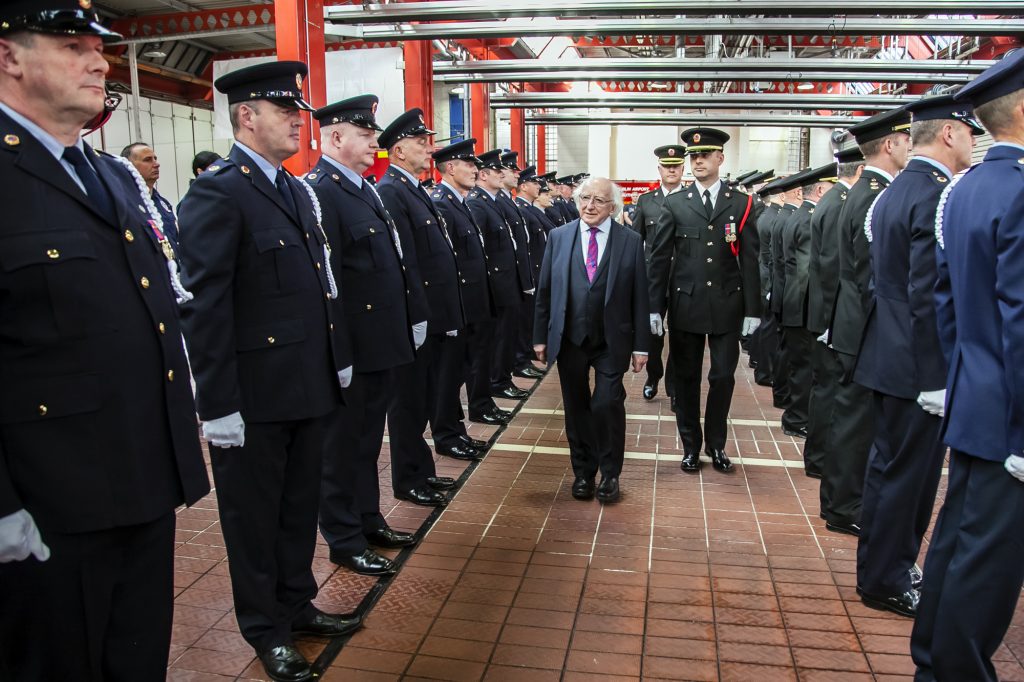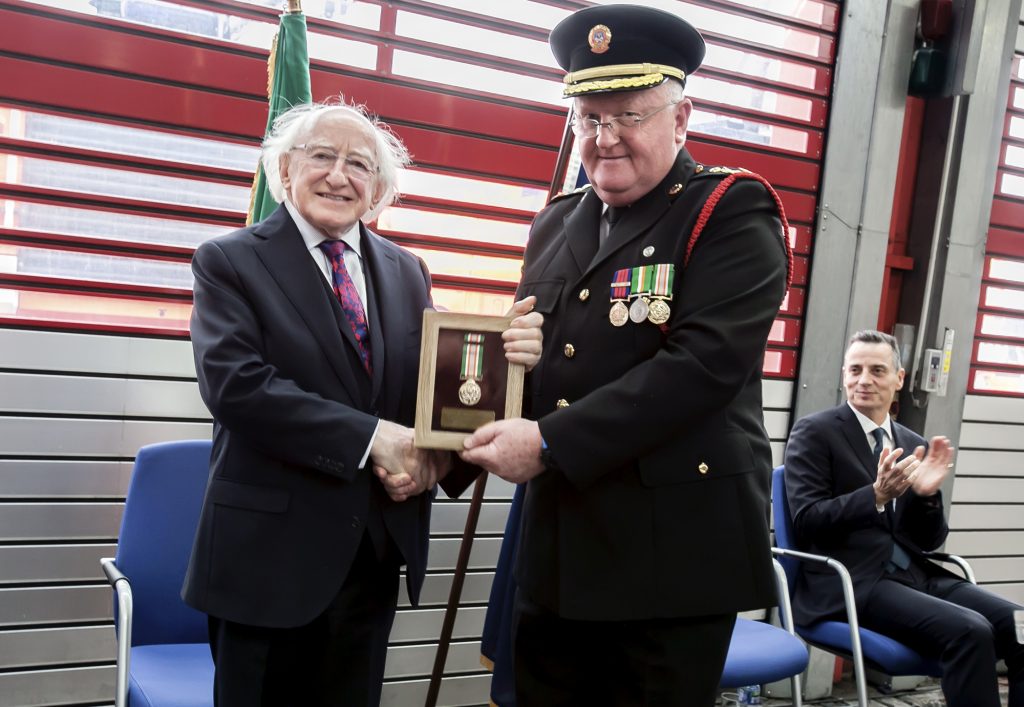
The President of Ireland, Michael D. Higgins, visited Dublin Airport’s Fire Station to commemorate the 75th anniversary of its emergency services. The President, who was accompanied by Mrs. Higgins, spoke at a ceremony to mark the airport’s emergency services milestone and presented a specially commissioned medal to the airport’s 120 Fire Officers.
During his address President Higgins spoke about the crucial and specialised role of the airport’s fire service, the continuous rigorous training required and the constant need to be on standby should an incident occur.

“It was a tremendous honour to welcome the President Higgins to the 75th anniversary of the airport’s emergency services,” said Dalton Philips, daa Chief Executive. “daa is proud of the central role that Dublin Airport plays in the national economy and without its Fire Service, the airport simply could not operate.”
“Our service has grown from very humble beginnings 75 years ago when we had about 15,000 aircraft movements and less than 100,000 passengers to 224,000 aircraft movements and almost 30 million passengers in 2017,” said Gerry Keogh, Dublin Airport’s Chief Fire Officer.
Dublin Airport’s own emergency service was established in the mid-1940s with a part time Fire Chief, and two assistants – a carpenter and a storeman – who were presented with a fireman’s belt, an axe and military helmet. Today, Dublin Airport Fire Officers are highly trained and specialise in fire-fighting skills required for a full-scale aircraft emergency. Airport Fire Officers work full time, 24 hours a day, seven days a week, 365 days a year, including Christmas Day, even though there are no flight operations that day.
Key tasks for Dublin Airport’s Fire Officers are the protection of life and buildings, attending to aircraft incidents, fire alarm activations on the airport’s campus, attending accidents and medical emergencies, fuel spillages, wildlife management on the airfield, runway inspections, and runway breaking action assessments during winter operations.

“We take immense pride in protecting our customers, colleagues and buildings. Not only are we airport fire officers, we are also trained instructors and 25 of our fire officers are fully trained paramedics. We are constantly on standby and prepared for the day that we hope never comes,” added Gerry.
Dublin Airport’s Fire Officers are also trained in defibrillator use and the airport was designated a Heart Safe Airport by the Irish Heart Foundation as a result of its defibrillator programme, which has seen 31 lives saved at the airport in the past 15 years.
Dublin Airport is a Category 9 airport, meaning it must have 24,300 litres of capacity ready at all times, so three foam tenders are always on standby. The Category 9 designation is certified by the Irish Aviation Authority, the regulating authority, and is based on the size and type of aircraft operating at the airport.
The airport’s emergency service has a fleet that comprises seven airport crash tenders – the largest in the country – with an individual capacity for 11,000 litres of water and 1,600 litres of foam, two domestic fire tenders and two emergency ambulances. Airport Fire Officers are required to be at an aircraft emergency within two minutes and not exceeding three minutes anywhere on the airfield.




